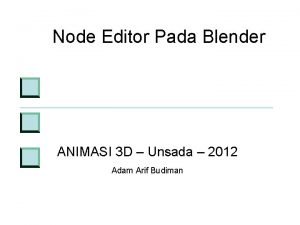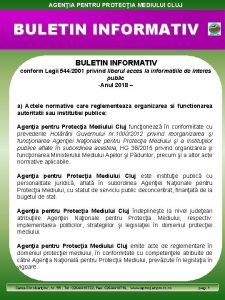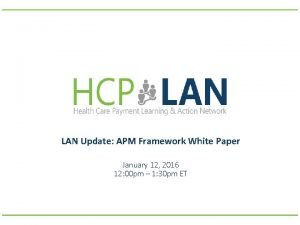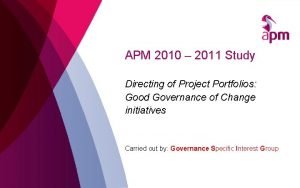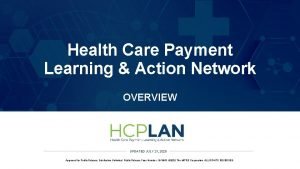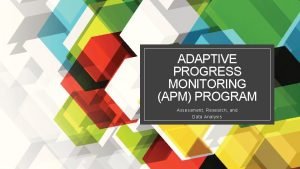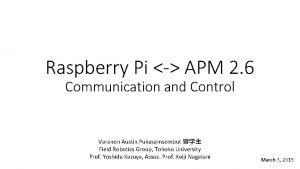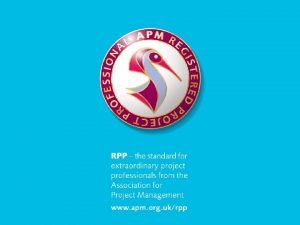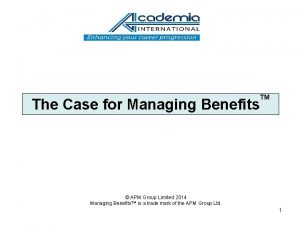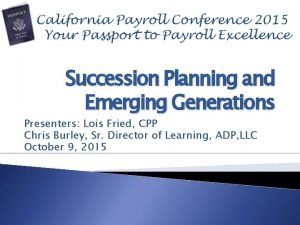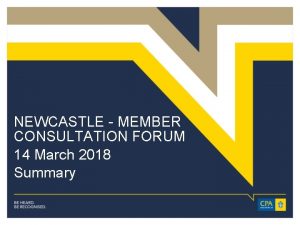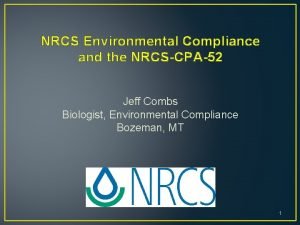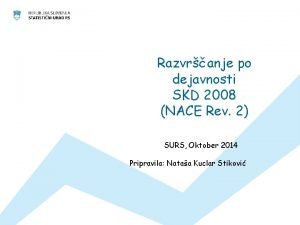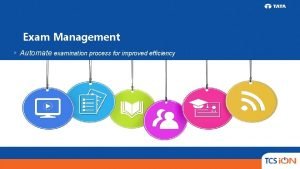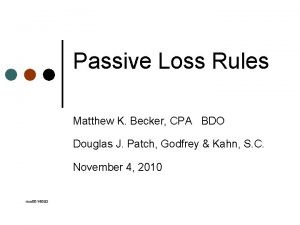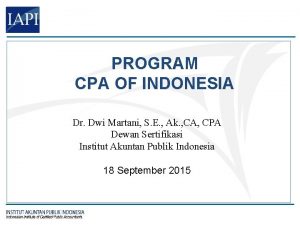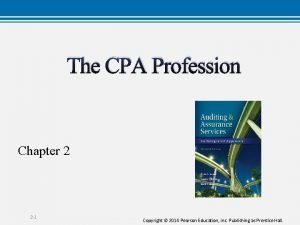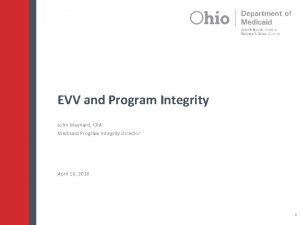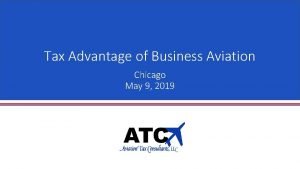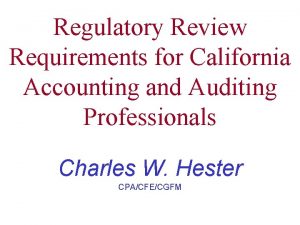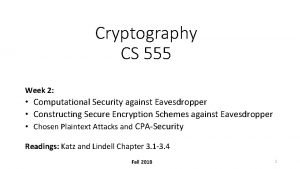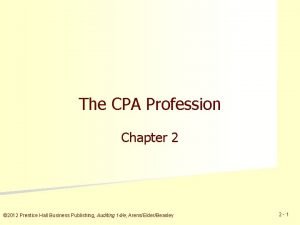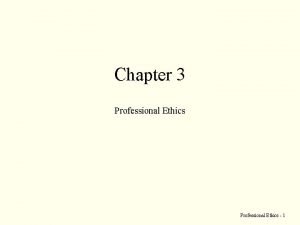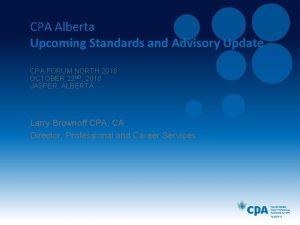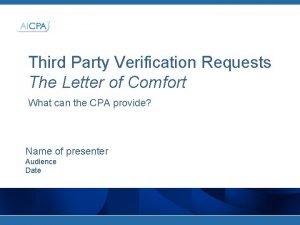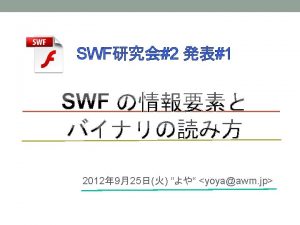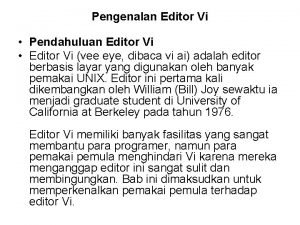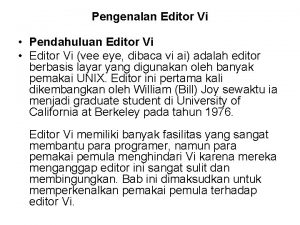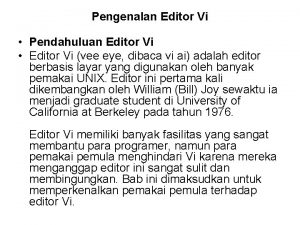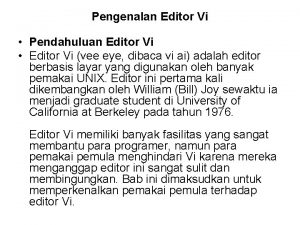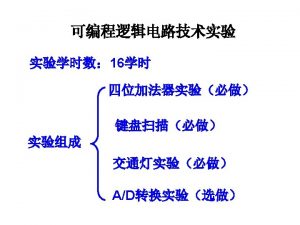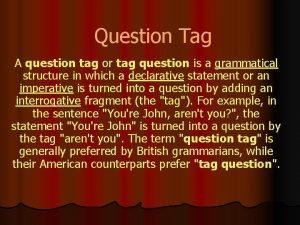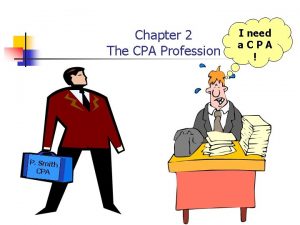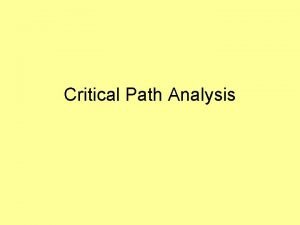TAG Susan Wright CPA APM Manging Editor TAG


















































- Slides: 50

TAG Susan Wright, CPA, APM Manging Editor, TAG November 6, 2019


TAG on Cheetah New Platform DEMO

TAG Frequently Asked Questions Plan Corrections under EPCRS

What’s New under EPCRS § Rev. Proc. 2019 -19 became effective on April 19, 2019, replacing Rev. Proc. 2018 -52 § Expanded the self-correction program (SCP) for certain document failures § Expanded SCP for certain operational failures through retroactive amendment to conform the terms of the plan to its operations § Added option for correcting certain loan failures under SCP § Permits failure to obtain spousal consent under SCP, VCP or Audit CAP § Added reference to correction examples posted on the IRS website 5

Common Operational Failures § § Plan Eligibility Plan Contributions Plan Compensation Plan Distributions and Loans 6

Plan Eligibility 7

Plan Eligibility I – Fact Pattern § Plan requires 6 months of service to participate § Plan has been allowing employees to participate after 90 days of service 1. What correction method should be used - do those employees have to have their contributions returned? 2. Can the plan be retroactively amended to reflect how the plan sponsor has been operating? 8

Plan Eligibility I – The Answer § The employees do not have to have their contributions returned § Generally, the correction could be made by amending the plan retroactively under SCP to make the employees eligible on the date they were first allowed to participate in the plan § Must be within SCP correction period if significant § Must have established practices and procedures § Must predominately impact NHCEs 9

Plan Eligibility I – The Answer Rev. Proc. 2019 -19 provides that "The plan is amended retroactively to change the eligibility or entry date provisions to provide for the inclusion of the ineligible employee to reflect the plan's actual operations. The amendment may change the eligibility or entry date provisions with respect to only those ineligible employees that were wrongly included, and only to those ineligible employees, provided (i) the amendment satisfies § 401(a) at the time it is adopted, (ii) the amendment would have satisfied § 401(a) had the amendment been adopted at the earlier time when it is effective, and (iii) the employees affected by the amendment are predominantly nonhighly compensated employees. " 10

Plan Eligibility II – Fact Pattern § HCE was allowed to participate in the plan during 2018 § He was not eligible to enter the plan until 1/1/2019 § He made deferral contributions and received safe harbor matching contributions § There was a loss in his account How would this need to be corrected for the deferrals and safe harbor match? 11

Plan Eligibility II – The Answer § Generally, the correction would be to amend the plan retroactively under SCP to conform the terms of the plan to how the plan was operated § This correction option is only available if the amendment predominately impacts NHCEs § It appears the correction would be to distribute the ineligible deferrals (adjusted for the related loss) to the participant, following the general correction principles of Rev. Proc. 2019 -19 § The related safe harbor matching contributions would need to be removed from the participant’s account, adjusted for the related loss, and placed in an "unallocated account" to be used to reduce employer contributions for the current or future year 12

Plan Eligibility III – Fact Pattern § Controlled group with two employers § 401(k) plan covers all employees of the controlled group § Only one of the employers has adopted the plan Can this be self-corrected under the new EPCRS procedures by a retroactive plan amendment which would include both entities? 13

Plan Eligibility III – The Answer § No. The plan would need to be amended retroactively under VCP § A retroactive corrective amendment is permitted under SCP to make "otherwise eligible employees" eligible for the plan retroactively when they were let into the plan before meeting the plan's minimum age, service or entry date requirements § These employees were not let into the plan early. Rather, they were not eligible for the plan since their employer had not adopted the plan § This option was available prior to Rev. Proc. 2019 -19 under Appendix B 14

Plan Eligibility III – The Answer § Under the new rules, an operational failure may be corrected by plan amendment under SCP provided all of the following conditions are satisfied: § the amendment results in an increase of a benefit, right, or feature, § the increase in the benefit, right, or feature applies to all employees eligible to participate in the plan, and § the increase is permitted under the Code and regulations § It appears the IRS is taking a very narrow view of these rules 15

Plan Eligibility III – The Answer From Rev. Proc. 2019 -19 SECTION 4. PROGRAM ELIGIBILITY. 05 Correction by plan amendment. (2) Availability of correction by plan amendment in SCP is available for corrections made by plan amendment, as provided in section 4. 05(2)(a), (b), and (c). In addition, a Plan Sponsor may adopt a plan amendment to reflect corrective action. For example, if the plan failed to satisfy the actual deferral percentage (ADP) test required under § 401(k)(3) and the Plan Sponsor must make qualified nonelective contributions not already provided for under the plan, the plan may be amended to provide for qualified nonelective contributions. (a) Correction of Operational Failure by plan amendment for a Qualified Plan or 403(b) Plan. A Plan Sponsor of a Qualified Plan or 403(b) Plan may correct an Operational Failure by plan amendment in order to conform the terms of the plan to the plan's prior operations only if the following conditions are satisfied: (i) The plan amendment would result in an increase of a benefit, right or feature. (ii) The increase in the benefit, right, or feature applies to all employees eligible to participate in the plan. (iii) Providing the increase in the benefit, right, or feature to participants is permitted under the Code (including the requirements of §§ 401(a)(4), 410(b), 411(d)(6), and 403(b)(12), as applicable), and satisfies the correction principles of section 6. 02 and any other applicable rules of this revenue procedure. (b) Operational Failure correction methods in accordance with Appendix B. In addition to correction by plan amendment as described in section 4. 05(2)(a), a Plan Sponsor of a Qualified Plan or 403(b) Plan may use SCP to correct Operational Failures listed in section 2. 07 of Appendix B by plan amendment, to conform the terms of the plan to the plan's prior operations. Under SCP, these failures must be corrected in accordance with the correction methods set forth in section 2. 07 of Appendix B. 16

Plan Eligibility III – The Answer From the IRS Website: Plan Compensation Errors - How to Correct When Your Plan Definition of Compensation is Different From Plan Operations Example: XYZ Corporation sponsors a 401(k) profit-sharing plan with making contributions plan with 57 plan participants. The written terms of the plan exclude bonus compensation for plan purposes. While conducting a compliance check for the 2017 and 2018 plan years on July 8, 2019, it was discovered that the plan sponsor permitted bonus compensation to be counted for plan purposes. This resulted in increased elective deferrals and matching contributions for two plan participants. XYZ Corporation wants to adopt a retroactive plan amendment, effective as of 1/1/2017, to include bonus compensation under SCP as permitted by Rev. Proc. 2019 -19, section 4. 05. Unfortunately, the corrective amendment can’t be adopted under SCP because all of the applicable conditions specified in Rev. Proc. 2019 -19 have not been met. As all plan participants did not receive bonus compensation, the increase in benefits was not provided to all employees eligible to participate in the plan. While the retroactive plan amendment can’t be approved under SCP, the plan sponsor could seek approval for such corrective plan amendment by making a submission to the IRS under the VCP program. https: //www. irs. gov/retirement-plans/plan-compensation-errors-how-to-correct-when-your-plan-definition-ofcompensation-is-different-from-plan-operations 17

Plan Contributions 18

Plan Contributions I – Fact Pattern 401(k) Plan Sponsor allowed participants to make Roth contributions Plan does not permit Roth contributions All participant election forms and enrollment materials indicated Roth contributions could be made § This has been going on for over 2 years § § I don't believe a retroactive amendment is allowable. What are their options? 19

Plan Contributions I – The Answer § The correction would be to amend the plan retroactively to permit Roth contributions § This could be done under VCP § Assuming the opportunity to make Roth contributions was provided to ALL eligible employees, it is also possible it could be done under SCP. Considerations include: § the time frame involved, § the significance of the failure, and § whether the plan sponsor would meet the general requirements to use SCP 20

Plan Contributions II – Fact Pattern § An employee was hired 2/1/19 and terminated on 7/30/19 § The plan provides for automatic enrollment § The employee was not automatically enrolled What contribution, if any, does the plan sponsor owe the employee? 21

Plan Contributions II – The Answer § The general correction method outlined under Rev. Proc. 2019 -19 would be for the employer to make a QNEC for the "missed deferral opportunity" (50% of the missed deferral), along with any related matching contributions based on the full missed deferral, adjusted for earnings § The additional "safe harbor" correction methods would not be available in this situation since the employee terminated § Necessary notice requirement could not be satisfied 22

Plan Contributions II – The Answer 401(k) Plan Fix-It Guide - Eligible employees weren't given the opportunity to make an elective deferral election (excluding eligible employees). Example 4: Assume the same set of facts, except that one of the XYZ’s excluded employees terminated in March of 2016. Then none of the special safe harbors in Appendix A. 05(8) or. 05(9) would be applicable to the terminated employee as the conditions discussed in Rev. Proc. 2018 -52 can’t be met as the employee is no longer employed by XYZ at the time of correction. Therefore, the lost opportunity cost for the missed deferrals would be 50% of the missed deferral amounts for this employee. Adjust for earnings through the date of correction. The concepts relating to a reduced QNEC for missed deferrals may also be applied to failures involving a failure to implement a 401(k) plan’s automatic enrollment/escalation features or a failure to properly implement a participant’s written salary reduction election. https: //www. irs. gov/retirement-plans/401 k-plan-fix-it-guide-eligible-employees-were-notgiven-the-opportunity-to-make-an-elective-deferral-election-excluding-eligible-employees 23

Plan Contributions III – Fact Pattern § Payroll clerk accidentally included a $10, 000 bonus on participant's paycheck § She issued a corrective paycheck before the money was deposited to participant's bank account § The payroll clerk forgot to correct the records § The company funded the deferrals and employer matching contribution to the participant’s account 1. What can company do to reverse the excess deferral and matching? 2. Must funds stay in plan or can they be refunded to company? 24

Plan Contributions III – The Answer § Under Rev. Proc. 2019 -19, the amount deposited in error is considered an "Excess Allocation" § The correction would be to remove the amount that was deposited in error from the participant's account, adjusted for earnings, and place that amount in an unallocated account to be used to reduce future contributions § Technically, the full deposit was an employer contribution (not deferrals) since no part of the deposit was actually withheld from compensation the participant was entitled to receive § The funds must stay in the plan § Rev. Proc. 2019 -19 does not include returning the amount to the employer as a correction methodology for the error 25

Plan Compensation 26

Plan Compensation I – Fact Pattern § During a plan audit (2018) the auditor discovered deferrals were not withheld from certain compensation § Compensation definition is W-2 wages with no exclusions § Gift cards were given to some employees (included on W-2 s) § The plan sponsor did not withhold deferrals or make matching contributions on these amounts § The auditor instructed the plan sponsor to amend the plan retroactively to “exempt gift cards from 401(k) withholdings" 1. My understanding is that this cannot be done under SCP. Is that correct? 2. If so, how should this error be corrected? 27

Plan Compensation I – The Answer § This could not be done under SCP by retroactive amendment § Based on information on the IRS website, it might be possible to make such a retroactive amendment under VCP § The VCP filing would have to include documentation substantiating participant expectations that gift card compensation was NOT plan eligible compensation § Otherwise, this would be a failure to (fully) implement each employee’s deferral election § Note: Rev. Proc. 2019 -19 generally does not permit retroactive amendments that would violate the Code, including section 411(d)(6) 28

Plan Compensation I – The Answer From the IRS Website: Plan Compensation Errors - How to Correct When Your Plan Definition of Compensation is Different From Plan Operations Each VCP application is evaluated on the specific facts and circumstances submitted. . . The opposite type of situation would be a plan document that included bonuses, overtime or commissions in compensation but the plan sponsor excluded those amounts of compensation in operation. In that situation, the plan sponsor would request to correct by retroactively amending the plan to exclude bonuses, overtime or commissions from the plan’s written definition of compensation. The plan sponsor would need to demonstrate that the affected participants had expectations that the plan’s written definition of compensation excluded bonuses, overtime or commissions. If the plan sponsor is able to show this, then the IRS would probably approve a retroactive amendment. If this retroactive amendment is approved, then this definition of compensation would be subject to additional nondiscrimination testing under Internal Revenue Code Section 414(s). If the plan sponsor can’t prove that the participants had expectations that the plan definition of compensation excluded bonuses, overtime or commissions, it is unlikely that the IRS would approve a retroactive amendment. In this instance, the plan sponsor would need to make corrective contributions to the affected participants, adjusted for lost earnings. https: //www. irs. gov/retirement-plans/plan-compensation-errors-how-to-correct-when-your-plan-definition-ofcompensation-is-different-from-plan-operations 29

Plan Compensation II – Fact Pattern § The plan is a calendar year plan § Plan year ended 12/31/2018 § Throughout 2018 the employer’s payroll system did not calculate employee deferral or the safe harbor match contributions on some eligible compensation, e. g. bonuses, vehicle reimbursement usage The employer owes the employees the missed safe harbor match amounts plus applicable earnings but does the employer also owe the employees a QNEC contribution equal to 50% of the missed deferrals? 30

Plan Compensation II – The Answer § This was a failure to (fully) implement each employee's deferral election § The general correction method would be for the employer to make a QNEC for the "missed deferral opportunity" (50% of the missed deferral), along with any related matching contributions based on the full missed deferral, both adjusted for earnings § In this situation, the missed deferral should be based on the deferral election of each employee and their improperly excluded compensation 31

Plan Compensation II – The Answer § Alternatively, for employee deferral failures that exceed 3 months, but do not extend beyond the SCP deadline for significant failures, the plan sponsor can make a 25% QNEC (i. e. 25% of the missed deferral) for employee elective deferrals failures provided ALL of the following conditions can be satisfied: § The failure may not extend beyond the deadline for correcting significant errors under SCP § Correct deferrals must begin no later than the earlier of (a) the first payroll date coincident with or next following the last day of the second plan year following the plan year in which the failure occurred, or (b) the first payroll date following or coincident with the last day of the month following the month in which the employee notified the employer of such failure § Affected participants must be provided a notice no later than 45 days after the date correct deferrals commence that includes specific information § The employer must make a corrective contribution for related matching contributions, adjusted for earnings, on the full missed deferral (if applicable) § If all of these requirements could not be satisfied, the general correction method i. e. the 50% QNEC, would need to be used to make the necessary corrections 32

Plan Compensation III – Fact Pattern § 401(k) plan with safe harbor match (100% up to 4%) § Employees are eligible after 6 months of service and compensation is recognized from the date of entry into the plan § Employer funds safe harbor match each payroll period § True-up calculation done at the end of the year § New HR person did the calculation for 2018 (normally, done by us) and used compensation for the true-up match back to the participants date of hire § This resulted in $15, 000 overfunding for the safe harbor match § The client wants to amend the plan retroactively for the 2018 plan year to use compensation for the plan year § Only NHCEs would benefit from this amendment 1. Can we do a retro amendment in 2019 for this 2018 client error? 2. If this retro amendment is permissible should it always remain this way since it was to correct a document compliance mistake? 33

Plan Compensation III – The Answer § Yes, this would be permissible Rev. Proc. 2019 -19 § Appears the correction could not be made under SCP § There isn't a requirement that this be a permanent change; it could apply for only the 2018 plan year 34

Plan Compensation III – The Answer From the IRS Website: Plan Compensation Errors - How to Correct When Your Plan Definition of Compensation is Different From Plan Operations Example: XYZ Corporation sponsors a 401(k) profit-sharing plan with making contributions plan with 57 plan participants. The written terms of the plan exclude bonus compensation for plan purposes. While conducting a compliance check for the 2017 and 2018 plan years on July 8, 2019, it was discovered that the plan sponsor permitted bonus compensation to be counted for plan purposes. This resulted in increased elective deferrals and matching contributions for two plan participants. XYZ Corporation wants to adopt a retroactive plan amendment, effective as of 1/1/2017, to include bonus compensation under SCP as permitted by Rev. Proc. 2019 -19, section 4. 05. Unfortunately, the corrective amendment can’t be adopted under SCP because all of the applicable conditions specified in Rev. Proc. 2019 -19 have not been met. As all plan participants did not receive bonus compensation, the increase in benefits was not provided to all employees eligible to participate in the plan. While the retroactive plan amendment can’t be approved under SCP, the plan sponsor could seek approval for such corrective plan amendment by making a submission to the IRS under the VCP program. https: //www. irs. gov/retirement-plans/plan-compensation-errors-how-to-correct-when-your-plan-definition-ofcompensation-is-different-from-plan-operations 35

Plan Distributions & Loans I – Fact Pattern § In balancing plan assets for 2018, we discovered that a couple of contributions were posted to the wrong participant's accounts in error § 2 of the participants who received money in error have terminated employment and have taken a distribution I assume that the company has to fund the missing contributions with earnings, but is there anything that can be done about the participants who received too much money from the plan? 36

Plan Distributions & Loans I – The Answer § This resulted in an Excess Allocation and an Overpayment (essentially two separate failures) § Since the contribution would not have been allocated to other participants, the correction would have been to reduce the affected participant's account balances by the amount of the Excess Allocation, adjusted for earnings, and apply it toward future employer contributions § Since that was not done before the Excess Allocation was distributed to the 2 terminated participants, there has also been an "Overpayment" 37

Plan Distributions & Loans I – The Answer § Generally the correction for an overpayment would be for the employer to take reasonable steps to have the overpayment, adjusted for related earnings, returned by the participant to the plan § If the participant refuses or cannot, the employer (or another person) must contribute the amount, adjusted for earnings, to the plan § The participant generally must also be notified that the amount was not eligible for rollover § If the amount of the overpayment is $100 or less, the employer would not need to seek repayment or notify the participant that the amount was not eligible for rollover 38

Plan Distributions & Loans I – The Answer From Revenue Procedure 2019 -19 SECTION 6. CORRECTION PRINCIPLES AND RULES OF GENERAL APPLICABILITY. 02 Correction principles. Generally, a failure is not corrected unless full correction is made with respect to all participants and beneficiaries, and for all taxable years (whether or not the taxable year is closed). Even if correction is made for a closed taxable year, the tax liability associated with that year will not be redetermined because of the correction. Correction is determined taking into account the terms of the plan at the time of the failure. Correction should be accomplished taking into account the following principles: (5) Special exceptions to full correction (c) Recovery of small Overpayments. Generally, if the total amount of an Overpayment to a participant or beneficiary is $100 or less, the Plan Sponsor is not required to seek the return of the Overpayment from the participant or beneficiary. The Plan Sponsor is not required to notify the participant or beneficiary that the Overpayment is not eligible for favorable tax treatment accorded to distributions from the plan (and, specifically, is not eligible for taxfree rollover). 39

Plan Distributions & Loans I – The Answer From Revenue Procedure 2019 -19 (4) Correction of Overpayment (defined contribution plans and 403(b) Plans). (a) In general. An Overpayment from a defined contribution plan or 403(b) Plan is corrected in accordance with the Return of Overpayment method set forth in this section 6. 06(4). Under this method, the employer takes reasonable steps to have the Overpayment repaid to the plan, adjusted for Earnings at the plan's earnings rate from the date of the distribution to the date of the correction of the Overpayment. (b) Make-whole contribution. To the extent the amount of an Overpayment adjusted for Earnings at the plan's earnings rate is not repaid to the plan, the employer or another person must contribute the difference to the plan. The preceding sentence does not apply when the failure arose solely because a payment was made from the plan to a participant or beneficiary in the absence of a distributable event (but was otherwise determined in accordance with the terms of the plan (for example, an impermissible in-service distribution)). (c) Unallocated account. Except as provided in section 6. 06(4)(d), a corrected Overpayment, adjusted for Earnings at the plan's earnings rate to the date of the repayment, is to be placed in an unallocated account, as described in section 6. 06(2), to be used to reduce employer contributions (other than elective deferrals) in the current year and succeeding year(s) (or, if the amount would have been allocated to other eligible employees who were in the plan for the year of the failure if the failure had not occurred, then that amount is reallocated to the other eligible employees in accordance with the plan's allocation formula). 40

Plan Distributions & Loans II – Fact Pattern § A participant took out an on-line loan in December of 2018 through the financial vendor § The financial vendor sent the file to the plan sponsor to load into their payroll system to begin the loan repayment deductions § The plan sponsor failed to load this information into their payroll system § During the next 6 months both the participant and plan sponsor were notified that payments were not being made and the loan would be defaulted if not corrected § Those notices were either ignored or missed due to high turnover at the Plan Sponsor and probably ignored by the participant § The client now wants to know what can they do to correct this. The loan was deemed in 2019 41

Plan Distributions & Loans II – The Answer Is the plan sponsor required to make up any or all of the missed payments? § The participant is responsible for making up the missed loan payments § The employer should pay the interest that accrued as a result of the missed payments If the plan sponsor is not required to make up the contributions - could they? § No. The loan is a debt obligation of the participant 42

Plan Distributions & Loans II – The Answer Can this be corrected under SCP under the new guidance? § It depends. Rev. Proc. 2019 -19 provides that certain defaulted loans may be corrected under SCP to avoid a deemed distribution § The maximum term under IRC 72(p) cannot have expired § The general requirements for making a correction under SCP would have to be met, including the requirement that the plan have established policies and procedures in place to facilitate compliance with Code requirements § If those requirements can’t be met, it could be done under VCP If payments are made now to catch the loan up, will the loan still be treated as a deemed loan or could this be changed along with not having to issue the 1099 -R for 2019? § If payments are made to catch the loan up (under SCP or VCP), it would not be treated as a deemed distribution in 2019 and the plan would not issue a 1099 -R to the participant for 2019 43

Plan Distributions & Loans II – The Answer From Rev. Proc. 2019 -19 SECTION 4. PROGRAM ELIGIBILITY. 01 EPCRS Programs. (1) SCP is available to correct Operational Failures and certain Plan Document Failures as follows: (a) Operational Failures. A Plan Sponsor of a Qualified Plan or 403(b) Plan that is otherwise eligible for correction under SCP may use SCP to correct significant and insignificant Operational Failures (including certain plan loan failures described in section 6. 07). Operational Failures that are significant may be corrected under SCP only if the correction of the failure is completed or substantially completed (in accordance with section 9. 03) by the last day of the correction period described in section 9. 02. . 04 Established practices and procedures. To be eligible for SCP, the Plan Sponsor or administrator of a plan must have established practices and procedures (formal or informal) reasonably designed to promote and facilitate overall compliance in form and operation with applicable Code requirements. For example, the plan administrator of a Qualified Plan that may be top-heavy under § 416 may include in its plan operating manual a specific annual step to determine whether the plan is top-heavy and, if so, to ensure that the minimum contribution requirements of the top-heavy rules are satisfied. A plan document alone does not constitute evidence of established procedures. In order for a Plan Sponsor or administrator to use SCP, these established procedures must have been in place and routinely followed, and an Operational Failure or Plan Document Failure must have occurred through an oversight or mistake in applying them. SCP also may be used in situations in which the Operational Failure or Plan Document Failure occurred because the procedures that were in place, while reasonable, were not sufficient to prevent the occurrence of the failure…. 44

Plan Distributions & Loans II – The Answer From Rev. Proc. 2019 -19 SECTION 6. CORRECTION PRINCIPLES AND RULES OF GENERAL APPLICABILITY. 02 Correction principles…. (6) Correction principle for plan loan failures. In the case of a plan loan failure corrected in accordance with section 6. 07(3)(b), (c), or (d), the participant is generally responsible for paying the corrective payment. However, with respect to the failure listed in section 6. 07(3)(d)), the employer should pay a portion of the correction payment on behalf of the participant equal to the interest that accumulates as a result of such failure, generally determined at a rate equal to the greater of the plan loan interest rate or the rate of return under the plan. . 07 Correction of plan loan failures. (1) In general. Plan loan failures may be corrected under VCP, SCP, or Audit CAP, unless otherwise specified in this section 6. 07. (3) Correction methods for certain § 72(p) plan loan failures. (a) In general. The correction methods set forth in section 6. 07(3)(b), (c), and (d) apply to plan loans that do not comply with one or more requirements of § 72(p)(2); however, these correction methods are not available if the maximum period for repayment of the loan pursuant to § 72(p)(2)(B) has expired. Further, the IRS reserves the right to limit the use of these correction methods to situations that it considers appropriate, for example, if the loan failure is caused by employer action. A deemed distribution corrected under section 6. 07(3)(b), (c), or (d) is not required to be reported on Form 1099 -R, and corrective payments under section 6. 07(3) do not result in the affected participant having additional basis in the plan for purposes of determining the tax treatment of subsequent distributions from the plan to the affected participant. (d) Defaulted loans. A failure to repay a loan in accordance with loan terms that satisfy § 72(p)(2) may be corrected by (i) a single-sum corrective payment equal to the amount that the affected participant would have paid to the plan if there had been no failure to repay the plan, plus interest accrued on the missed payments, (ii) reamortizing the outstanding balance of the loan, including accrued interest, over the remaining payment schedule of the original term of the loan or the period remaining had the loan been amortized over the maximum period that complies with § 72(p)(2)(B), as measured from the original date of the loan, or (iii) any combination of (i) or (ii). 45

Plan Distributions & Loans III – Fact Pattern § 401(k) plan participant (non-owner) defaulted on a residential plan loan because the client failed to withhold loan repayments § Loan amount was $14, 500 § Loan terms – 25 years, 5. 75%, weekly repayment of $21. 03 were to begin 9/6/2017 § The client would like to correct under EPCRS to prevent the deemed distribution Is there any difference in the correction for a residential loan as compared to a non-residential loan? Can this loan default be corrected under EPCRS like a nonresidential loan can be? 46

Plan Distributions & Loans III – The Answer § No; there is no difference § Under Rev. Proc. 2019 -19, if the maximum term of the loan under IRC section 72(p)(2)(B) has not expired, loans failures generally can be corrected by: § Making a single lump-sum payment equal to the missed loan payments, plus accrued interest, or § Reamortizing the loan (and accrued interest) over the remaining term of the loan, or § Any combination these two methods 47

Plan Distributions & Loans III – The Answer § Correction can be made under SCP under the new guidance, assuming necessary requirements are satisfied § Rev. Proc. 2019 -19 eliminated the requirement that a “specific request for relief. . . be made if the applicant either wants relief from reporting a corrected participant loan as a deemed distribution…” 48

TAG on Cheetah 49

For more information on TAG on Cheetah § Visit www. TAGdata. com § Watch a short video demo of the all new Technical Answer Group (TAG) Dashboard on Cheetah™. CLICK HERE or go to: https: //wklrus-td. wistia. com/medias/vkixpaanwc) § For a free trial or to request a demo of TAG contact your ftw sales consultant or visit: http: //learn. wolterskluwerlr. com/ftw 50
 Susan payne cpa
Susan payne cpa Node editor adalah jenis editor yang mempunyai fungsi
Node editor adalah jenis editor yang mempunyai fungsi Jeden tag ist ein neuer tag
Jeden tag ist ein neuer tag Guten tag wie gehts
Guten tag wie gehts How to write banter
How to write banter Apm automation solutions
Apm automation solutions Agentia pentru protectia mediului cluj
Agentia pentru protectia mediului cluj Apm configuration bios
Apm configuration bios Centrifugally cast concrete pipe
Centrifugally cast concrete pipe Apm framework
Apm framework Apm ourplace
Apm ourplace Apm 2010
Apm 2010 Hcp lan apm framework
Hcp lan apm framework Pam denny
Pam denny @ggggg77767:https://youtu.be/hpftumnsree
@ggggg77767:https://youtu.be/hpftumnsree Fs assessments.org/apm
Fs assessments.org/apm Connect apm to raspberry pi
Connect apm to raspberry pi Apmp apm pq
Apmp apm pq Apm terminals headquarters
Apm terminals headquarters Apm arad
Apm arad Apm benefits management
Apm benefits management Ruxit apm
Ruxit apm Apm calibration centre
Apm calibration centre Lois fried
Lois fried Robyn erskine cpa
Robyn erskine cpa Cpm aoa
Cpm aoa Nrcs cpa 52
Nrcs cpa 52 Skd 2008
Skd 2008 Cpa alberta webinars
Cpa alberta webinars Ufm in tcs cpa
Ufm in tcs cpa Pgcps vpa/cpa application site
Pgcps vpa/cpa application site Bdo becker
Bdo becker Cpa building detroit
Cpa building detroit Ujian tingkat dasar cpa
Ujian tingkat dasar cpa Cpa-haka.com
Cpa-haka.com The cpa profession chapter 2
The cpa profession chapter 2 Maynard cpa
Maynard cpa Cpa uk
Cpa uk Kemcents
Kemcents John leslie cpa
John leslie cpa Cpa aviation
Cpa aviation Cpa approach
Cpa approach California cpa regulatory review
California cpa regulatory review Cpa security
Cpa security Dean poole cpa
Dean poole cpa Cpa firm hierarchy
Cpa firm hierarchy Cpa closest point of approach
Cpa closest point of approach Rules of professional conduct cpa ontario
Rules of professional conduct cpa ontario Cpa prep alberta
Cpa prep alberta Cpa confirmation letter
Cpa confirmation letter Cpa catania
Cpa catania

